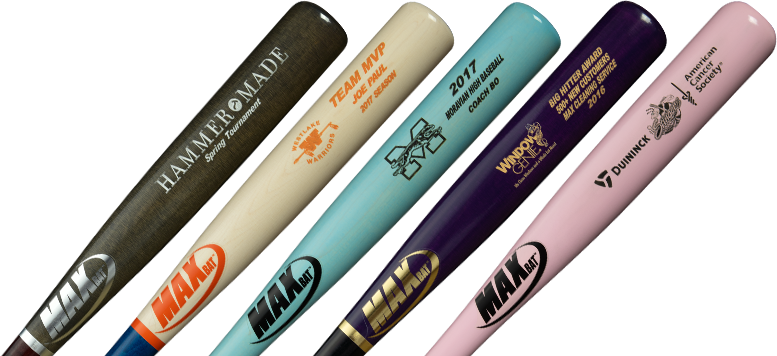 Ever watch a game on TV and ask yourself, “What is that dot on the wood bat handle?”
Ever watch a game on TV and ask yourself, “What is that dot on the wood bat handle?”
That is an area left exposed during the finishing process for an ink-spot, administered by the bat manufacturer. This is done as a quality control measure. By placing a small drop of ink 12″-14″ up from the knob on the face grain of the wood bat, we are able to verify whether or not the grain is good. The picture below shows a properly administered ink-test, and absolutely straight grain. The straighter the grain, the better the performance of the Maple bat or Birch bat. If the grain were to seep into the wood and show a slope-of-grain of more than 3 degrees, that would indicate wood of a lower quality and greater chance of the wood bat breaking in 2-pieces.
Because MaxBat uses wood that is split instead of sawn, we’re almost guaranteed that ink-testing reveals slope-of-grain of less than 2 degrees on any of our Maple bats or Birch bats.
It’s a question we frequently get asked, so we made the decision in November, 2013 to start ink-spotting all MaxBat Maple bats and Birch bats that are ordered by our online customers.
All MaxBats have always been treated as if they are being produced for a Major League Baseball player, and now each Maple bat and Birch bat from MaxBat features a visible ink-spot on the face grain of the handle. This ink-spot indicates that the wood bat has not only gone through the MLB slope-of-grain quality control test, but has also passed with a slope-of-grain less than 3 degrees (beware…some companies simply applying ink dots to the handles that clearly don’t pass). The MaxBat logo has also been rotated 90 degrees and placed on the edge grain to conform to MLB rules (adopted in 2009) that only apply to Maple bats and Birch bats (logo previously placed on the face grain). These steps ensure that you are swinging the same wood as our professional clients.


